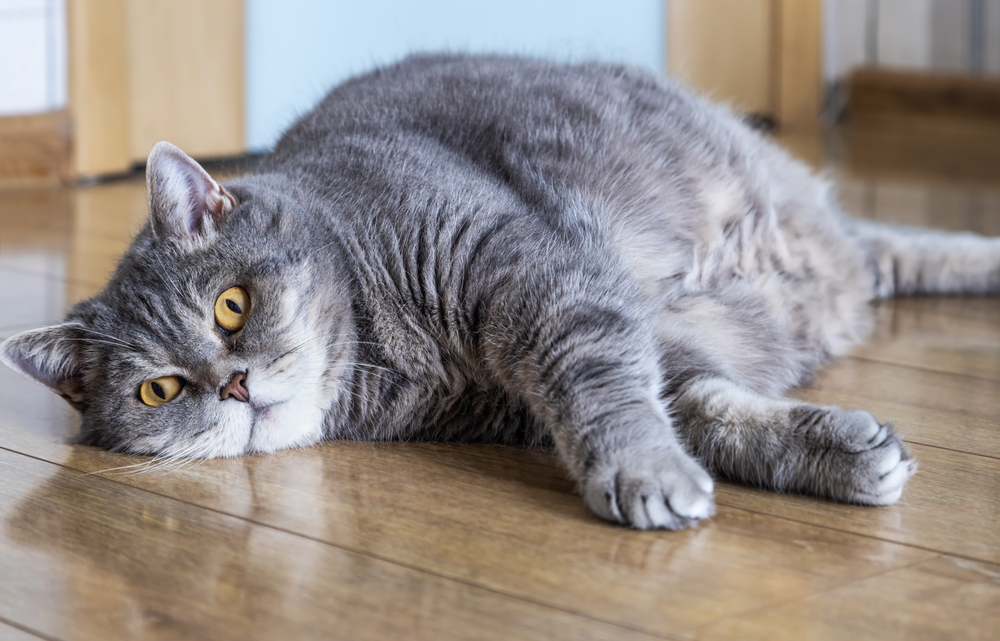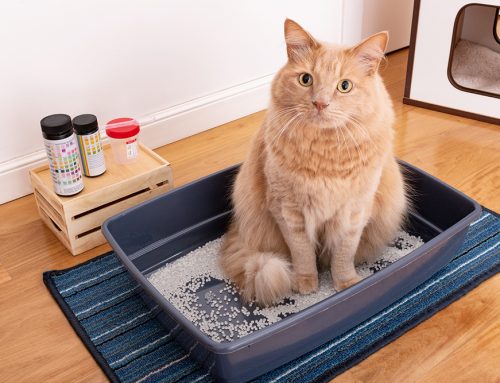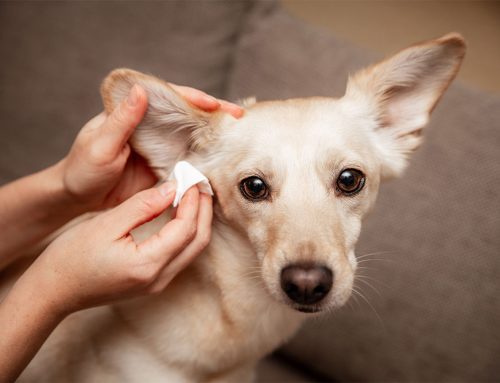Heavy hounds and cumbersome cats are the butt of many jokes, but the U.S. pet obesity epidemic is nothing to laugh about. On average, overweight and obese pets live shorter lives—as much as two and a half years less than their healthy weight counterparts. Considering that pet lives are already brief, this sad fact should be a call to action for dog and cat lovers.
Turning acknowledgement into action for your pet
If your Oliver Animal Hospital veterinarian has counseled you about your pet’s weight, or you’re simply concerned about your pet packing on a few pounds, you do not need to feel ashamed—instead, get motivated for change.
Here are five steps to get you off the starting line and help your pet achieve better health, mobility, and longevity.
#1: Get ready: Determine your pet’s body condition score
Start off strong by determining your pet’s baseline measurements. Similar to a gym weigh-in, your pet’s body metrics will inform their weight loss plan, including their ultimate goal weight, monthly weight loss goals, and exercise recommendations.
The body condition score (BCS) is a vital parameter in veterinary medicine similar to the human body mass index (BMI). Your pet’s BCS is a measure of their overall condition, including body fat, rather than a number on a scale. Your Oliver Animal Hospital veterinarian evaluates and records your pet’s BCS at every wellness visit, but you can easily perform this process at home to guide your pet’s feeding and exercise routine.
The BCS assessment includes:
- Palpating your pet’s ribs — You should easily feel each rib, which should have minimal fat cover. You should not need to press or squeeze your pet’s chest.
- Evaluating your pet’s profile — When you look at your standing pet from a distance, their belly or abdomen should not hang.
- Assessing your pet’s waistline — When you check your standing pet from above, you should see a well-defined waist or tuck between their last rib and hips.
Compare your findings to the dog or cat BCS score chart. A pet who scores 6 or above is considered overweight or obese.
#2: Get set: Rule out pet health conditions with a veterinary exam
Many common health problems can trigger or worsen pet weight gain and prevent or limit your pet’s weight loss success. So, your pet’s veterinary evaluation before altering their diet or increasing physical activity is imperative.
Such conditions include:
- Hypothyroidism in dogs
- Cushing’s disease (i.e., hypoadrenocorticism)
- Diabetes mellitus
- Arthritis
- Orthopedic disease (e.g., cranial cruciate ligament rupture, hip dysplasia)
If your pet is diagnosed with a disease or injury that may be contributing to their physical condition, they will need the problem treated or managed before they begin to lose weight. Alternatively, if your pet receives a clean bill of health, it’s time to get to work!
#3: Get going! Feed your pet appropriately with the veterinary team’s help
Feeding your pet involves more than filling their bowl. Successful weight loss begins with controlling your pet’s calorie intake through precise and measured feeding. This includes:
- Determining your pet’s daily energy requirements (DER)
- Learning to read pet food labels
- Calculating the amount of food your pet should eat per meal — Note, this is typically less than recommended on the dog or cat food bag.
- Restricting treats and “people food’” — This should be no more than 10% of your pet’s daily caloric intake.
These steps may sound daunting, but the Oliver Animal Hospital team can help you determine your pet’s individual needs, including whether they need a diet change to ensure safe and effective weight loss (i.e., reducing calories does not equal reducing nutrition).
How you feed your pet can also help them lose weight. Consider novel feeding strategies that encourage your pet to slow their eating and increase their physical activity, such as food-dispensing balls, hide-and-seek toys, and snuffle mats. This enrichment-based feeding routine not only helps your pet feel fuller and more satisfied but also decreases stress and promotes healthy sleep.
#4: Get active: Establish a consistent, safe pet exercise routine
Overweight and obese pets are often reluctant to exercise because they are suffering decreased or painful mobility caused by arthritis, orthopedic injuries, or back pain. However, when their pain is successfully managed, these pets can begin a controlled, low-impact exercise routine that includes:
- Leash walking
- Supervised swimming
- Hydrotherapy (i.e., underwater treadmill)
- Pet fitness or rehabilitation exercises
- Gentle interactive toy play for cats (e.g., feather wands, similar toys that stimulate prey drive)
#5: Get playful: Ensure our pet’s weight loss journey is fun

The road to a fit and healthy pet can be long and full of ups and downs, the same as for humans trying to lose weight, but dedication and consistency will ensure you both reach the finish line.
Avoid plateaus and setbacks with regular check-ins at Oliver Animal Hospital and by occasionally mixing up your pet’s routine. This could include:
- Adding healthy fruits or veggies to your pet’s bowl
- Introducing a new slow-feeder toy, lickable mat, or puzzle
- Exploring a new park, trail, or indoor element (e.g., cat tree or furniture)
- Attending an obedience, agility, or nosework training class
- Walking in a pet-friendly charity walk or 5K fun run
Your pet has one life. Help them live that life to the absolute fullest by scheduling a weight loss consultation with your trusted south Austin vet team at Oliver Animal Hospital. Contact us to book your visit or request an appointment online.








Leave A Comment